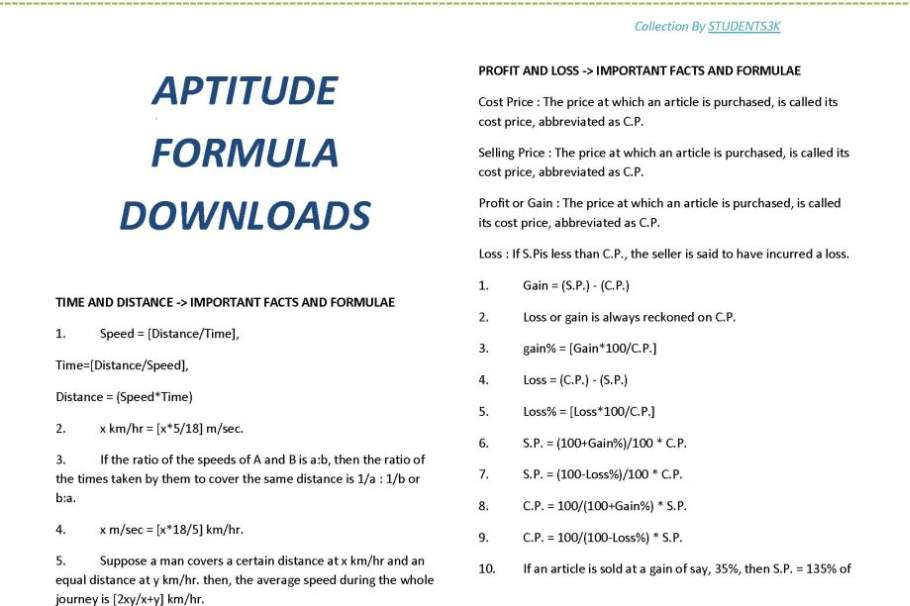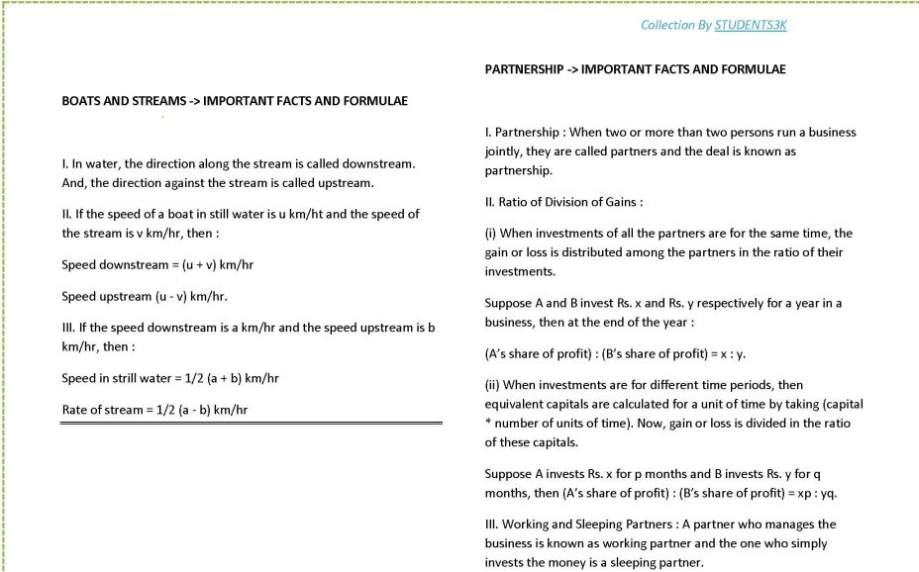|
#4
2nd December 2014, 01:07 PM
| |||
| |||
| Re: Quantitative Aptitude Shortcuts
Ok, you want to know the Shortcuts for Maths formulas to solve the quantitative aptitude so here I am providing you. Aptitude Formula shortcuts Time And Distance -> Important Facts And Formulae 1. Speed = [Distance/Time], Time=[Distance/Speed], Distance = (Speed*Time) 2. x km/hr = [x*5/18] m/sec. 3. If the ratio of the speeds of A and B is a:b, then the ratio of the times taken by them to cover the same distance is 1/a : 1/b or b:a. 4. x m/sec = [x*18/5] km/hr. 5. Suppose a man covers a certain distance at x km/hr and an equal distance at y km/hr. then, the average speed during the whole journey is [2xy/x+y] km/hr. Profit And Loss -> Important Facts And Formulae Cost Price : The price at which an article is purchased, is called its cost price, abbreviated as C.P. Selling Price : The price at which an article is purchased, is called its cost price, abbreviated as C.P. Profit or Gain : The price at which an article is purchased, is called its cost price, abbreviated as C.P. Loss : If S.Pis less than C.P., the seller is said to have incurred a loss. 1. Gain = (S.P.) - (C.P.) 2. Loss or gain is always reckoned on C.P. 3. gain% = [Gain*100/C.P.] 4. Loss = (C.P.) - (S.P.) 5. Loss% = [Loss*100/C.P.] 6. S.P. = (100+Gain%)/100 * C.P. 7. S.P. = (100-Loss%)/100 * C.P. 8. C.P. = 100/(100+Gain%) * S.P. 9. C.P. = 100/(100-Loss%) * S.P. 10. If an article is sold at a gain of say, 35%, then S.P. = 135% of C.P 11. If an article is sold at a loss of say, 35%, then S.P. = 65% of C.P. Volume And Surface Area -> Important Facts And Formulae I. Cubiod Let length = l, breadth = b and height = h units. Then, 1. Volume = (l x b x h) cubic units. 2. Surface area = 2 (lb + bh + lh) II. Cube Let each edge of a cube be of length a. Then, 1. Volume = a³ cubic units. 2. Surface area = 6a² sq. units. 3. Diagonal = √3 a units. III. Cylinder Let radius of base = r and Height (or length) = h Then, 1. Volume = (∏r²h) cubic units. 2. Curved surface area = (2∏rh) sq. units.`23      For more formulas here I am attaching a pdf file, it is free to download. |